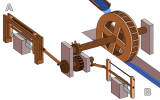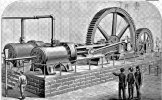While an interesting exercise in trying to define an issue I'm not sure it really has any real world relevance.
The realty is the world, thru it's technology, produces enough food for to feed a population of 8 billion people. Prior to industrialization that wasn't possible...
I'd say it might be seen as a little mental exercise to remind us what all that energy does, which we're often not aware of from day to day.
And what the consequences of some of the 'degrowth' ideas popular in certain circles would be.
I know people face starvation on this planet everyday, what WE have is a distribution issue not a quantity issue
Actually even in very poor regions, famine nowadays mostly just happens either when there's a civil/internal war going on / or a government is intentionally using poverty as an instrument of power. Ethiopia(Tigray) and Yemen for instance wouldn't have famine without war. At peace, usually even the distribution part works nowadays.
There is a burgeoning middle class all around the world because of energy
Access to energy also can make political freedoms more acheivable. (and again some degrowth types quite obviously would like to do away with middle classes...)
From a Roman viewpoint, a civilization without slaves just wasn't plausible.
Later European colonial powers tended to get righteous about slavery insofar as it had become marginal for their economic systems.
Once someone's livelihood no longer depends on violating someone elses' rights it suddenly becomes a lot easier to respect those rights...
This doesn't really mean those cultures were morally inherently superior to their predecessors, or other contemporary cultures that kept on slaving (say the Ottomans), rather industrialization made the adoption of such morals plausible and the defense of slavery more difficult. Pretty much the same goes for child labor etc.
That of course doesn't mean industrialization universally & directly leads to such improvements ... automating large parts of the textile production process through the 18th & early 19th century made it possible to process much more raw material, since before that clothes production had been strictly labor-constrained. So only through automation (plus also improved trade networks) did the demand for e.g. cotton hugely increase (most of it was processed in English textile mills), that turned it into a marvelous 'cash crop' which displaced others; but since the picking process wasn't as accessible to automation as spinning and weaving ... creating also an incentive to extend and expand slavery.
And to circle this back to the Romans, they built cranes
Of course, the Romans weren't stupid and knew about devices that either saved labor, or leveraged muscle labor to do things it otherwise couldn't. They did also know about waterwheels and such. It's just that compared to the level of organization, and availability of what we'd call 'capital' today ... they didn't go very far with it. And it does seem plausible that this does have to do with availability of slaves and the framework of using them had something to do with that.




